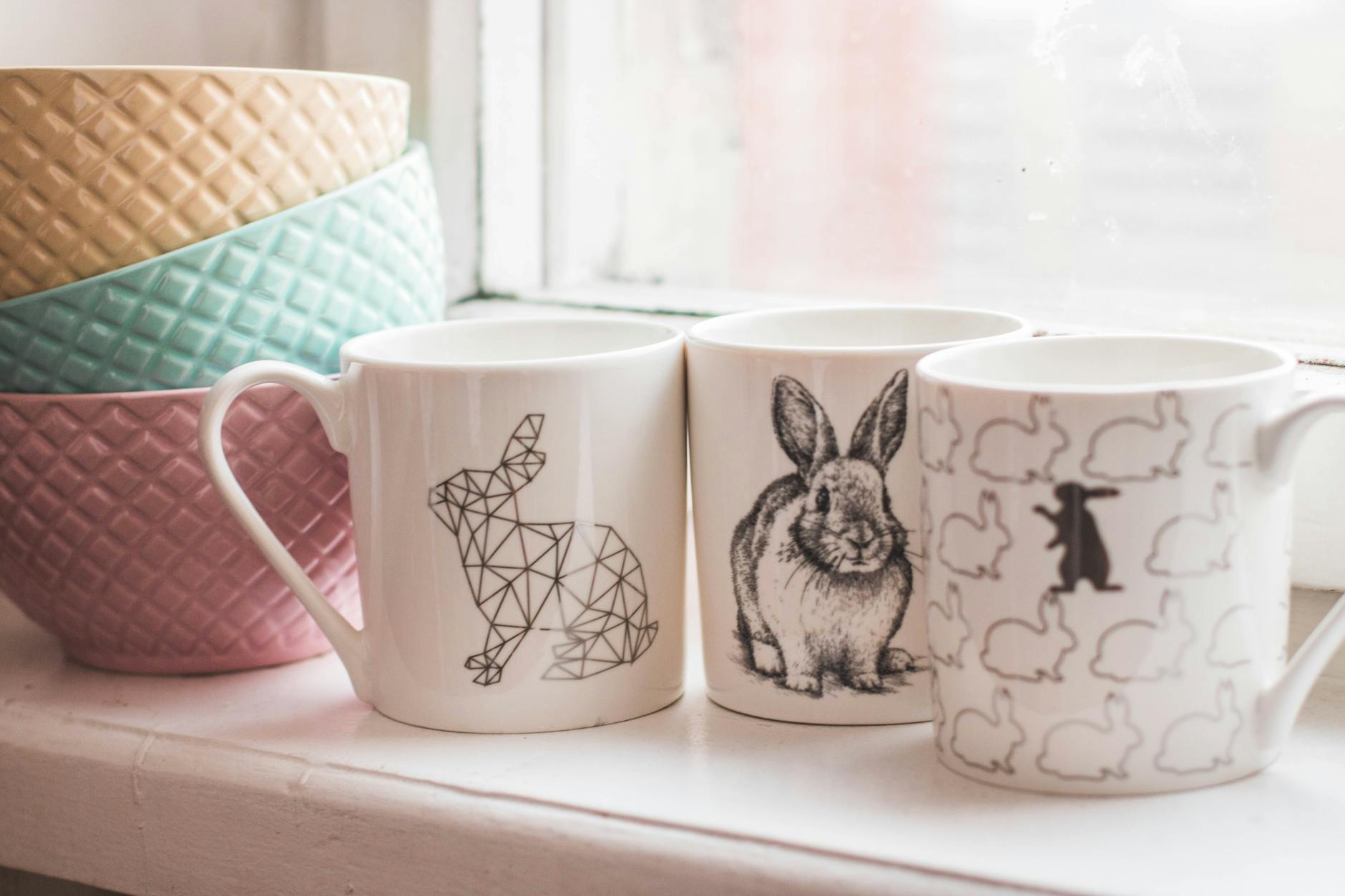Starting a small business, especially making physical products, can be scary. But I have tips about how to incorporate small scale manufacturing that will help! If you start your business with small scale manufacturing in mind from the get-go, it lets you minimize risks and also prepares you for rapid growth when things take off.
New Startup Opportunities
It seems like in the past, if you wanted to sell your own products there were two types of business you started:
- 1) Go big. Take a huge risk and require a lot of investment to launch a mass manufactured product.
- 2) Stay small. Make things with little investment, maybe by hand, and be limited in your growth potential
Now there seems to be a middle path developing as small scale manufacturing and digital design tools have entered the scene and become more accessible to individuals, not just companies. You can start designing products for free with programs like Photoshop, Illustrator, InDesign, SketchUp Fusion 360 and even learn how to use those programs for free with online tutorials depending on what type of business you are trying to start.

If you start a business with less capital invested, you don’t have as much pressure to hit upon something great with your first idea. You can try ideas out and test them in the market on the small scale and the market will definitely tell you what they think of your product (ie… is anyone buying it??). There’s not that huge loss from investing lots of money in machines or castings.
How to Get Started
I went through a whole bunch of product ideas before I found a few that stuck. My first thought was to sell second-hand books online on e-Bookshop, and really seemed to make sense at first. I had gotten a great response to them and had received lots of requests to buy them or rent them! However, as soon as I started researching shipping costs and measured how long it took to make them; considering my methods and what my profit margins would be… I realized it would not be practical. But the great thing is that realization didn’t impact me as a business at all. No capital had been spent on the product or any machine, etc. It was just in my small apartment room and on my computers, doing work, and doing research.

So I kept on developing ideas until one stuck for the first time!
When I felt the design was ready, I showed it to people (the community I had started building on Instagram and my contact) and potential bulk purchasing partners (in my case, Kericho West ), and I bought the minimum required infrastructure; packaging and branding.
Once the available infrastructure paid for itself, and once I felt secure in the amount of orders I had coming in, I used the money to scale up focusing more on bulk production for organizations and co-operates and signed up as a Jumia Seller.
Small Scale Manufacturing
Big companies have access to big, expensive machines to make their products. I had experience working with and designing for these companies at my past hustle.
Small scale manufacturing has come along so far and we can do so much from our own small shop.
General Process Walkthrough

I’ll outline what I recommend doing if you want to take advantage of small scale manufacturing capabilities:
- Start with the design. Like I mentioned before, there is free design software out there. Have actual, solid product designs before you invest in any machines.
- Once the design is ready, try making one yourself. If you don’t have the needed machine, you can try methods of making it by hand, you can go to a local workshop for sampling, or you can even use services online to have someone else make it on one of their machines and send it to you{ This is dependent on the type of product you are trying to make}. You can try selling these at smaller quantities to test the market.
- Once you have that proof of concept with your product, you can start making it in-house. Like I mentioned earlier, start with just one machine where the need is, and grow from there. It seems expensive, but if you’re able to start selling those early versions of your product, you’ll already have some profit potentially built up and you’ll have a better idea of your future sales projections.
- Once your making products in-house on your own machine, you’ll be able to make more and make them faster, thus being able to fund your own growing business, and you will continue from there.
Specific Example Walkthrough
To give you a specific example instead of general tips, here’s how I went through making one of my products.
- I started with the design. I did all of the design work in Adobe Illustrator so I had a solid idea of what the product would look like, it’s size, things like that.
- Then I generated PNG of my design and placed it on a few products; T-shirts and Mugs to see how they looked and how much material I would need. This let me know important variables before I spent any money at all.
- Next, I was able to test the PNG with an actual plotter, figure out any bugs or kinks, and optimize it. I ran it on CorelDRAW and went through the full iterations of the print to bring the material used down from 15 per meter to about 25 – which is a HUGE production cost saver, especially when you scale up your production!
Having all these variables figured out and optimizing your product production at the small scale really helps you if your product goes big down the line. If I need to hire help to make more or outsource production outside of my own shop, I am in a position to do that.
Product Design
So I’ve talked a lot about manufacturing “it”… but what “it” is, is very important!
While designing products,try to keep two things in mind:
- Function
- Manufacturability-this is the production part.
I design products with small scale manufacturing in mind, and for me that means either own direct printing, or molding or screening or pressing and packaging. Each of these methods of making works with some types of designs and not others, so I try to create designs that work with the manufacturing method, not against it. For example:
- Vinyl cutting often leave cut lines, which you’d usually take additional time running a finishing pass on by hand peeling them one by one. So I designed a print and in a way that looked good with a small pieces of the unreachable vinyl holding out. In fact, I think it looks like a feature! Or on other cases I opt to a screen printing option that allows me to do small details
- Try to minimize human intervention needed for your products. That means nothing hand painted, hand stitched, etc unless that’s how the production is set to be: and in that case try minimizing machine interaction for your production. I do still do a little finishing work, but I try to keep it as minimal as possible while still getting a finished product a really proud of.
- Try to keep your robot(Machines) active time as high as possible!: Again, this is if you are using one. The more your machines are making, the more it frees you up to brainstorm new product ideas, reach out to new customers, or if you are still a student like me then to study.
Competitive Advantage
Another thing to keep in mind is when it comes to cost, it’s going to be near impossible to beat a huge company that mass manufactures products with huge economies of scale. But there are other things you can do to keep a competitive advantage:
Customize Products

You can really set yourself apart by customizing your products for the people ordering them. Most big companies aren’t going to deal with that, plus it allows you to make something that’s more special and more meaningful for your customer. For example, I offer the option to engrave, print or sublime initials and dates on the back of selected products– which make great gifts, especially for events, weddings and anniversaries and such!
Trends and Seasons
You can be quick on your feet to adapt to trends and seasonal things. If something is trending on Instagram or YouTube or Pinterest, a big company may not be quick enough to take advantage of it
Relationships with Customers
You have the power to develop real relationships with your customers – something big companies just can’t do. Having a social media presence and selling things in person at local events are great ways to connect with your customers.-If you are interested in a list of events and markets that allows small scale businesses to strive please let me know on the comments.
Create or Find a Suitable Online Platform to Display and Sell Your Products.
Is much as selling is an easy word to say, doing it has proven to be a challenge to a number or if not all startups.
To run a really smooth sale you need a reliable marketing strategy, a good contact of supportive friends or affiliates and also an 24 hour running market place so as to keep your products selling whenever you are sleeping or on a different duty and more.
A 24 hour running market or shop are only achievable through e-commerce websites and platforms like Facebook shop or Instagram shop or WhatsApp shop which can all be integrated for one business when you have a running website.
I won’t dwell on this topic much today because it a wide topic. Just subscribe here to get a notification when I publish a post on this.
Tips on this is you can start your own website which will allow you to sell on all your social media platforms. [For help on this, reach to us directly on the WhatsApp icon below] or join a platforms like Jumia as a seller.
Outsourcing
Alright so what’s next? Let’s say you have a product, it’s selling really well, and you can’t keep up with the demand in your own shop. I haven’t personally had one of my products go so big that I had to use outside help, but I’ve had a lot of experience with this happening at my side gig.
Once you’re selling volumes that large, you can start approaching local manufacturers or overseas partners to increase the amount of products you can produce. {i have a list or reliable local and international options but they are narrowed down to a specific business}
If you come to them with a proven sales record and a projection for how much product you’re going to make, they’re way more likely to be on board and even work with you when it comes to budget.
Whereas if you come to them with simply an idea or a one-off design, they’re not going to want to waste their time. And that’s where everything we’ve been talking about comes together: a well-designed product, with a proven track record, that’s able to be scaled, that’s most likely based in digital design so you can send them a file… it allows you to scale beyond your own means.
You can have your standards in place, you can have a quality policy, and you grow without really too much risk or downsides. You can even take it a step further and bring in fulfillment help but working with your manufacturing, your packaging suppliers, etc and having everything sent out from a fulfillment center. All things that free you up to make new designs and grow your business.
‘
Closing Thoughts
I really hope this post inspired you to take that next step and start making products, with a better understanding of how you can utilize small scale manufacturing in your business. I know for many, taking that plunge into making products was a little scary… but when it becomes more scary to NOT take the risk than to take it, you should make the jump.
If you want to get bonus content and help us make more posts, you can support me and my hard-working team on Buy me a coffee below! or a direct option available to you.

Thank you guys and good luck with your endeavors!
This Post is sponsored by Notion

Try It Today.

